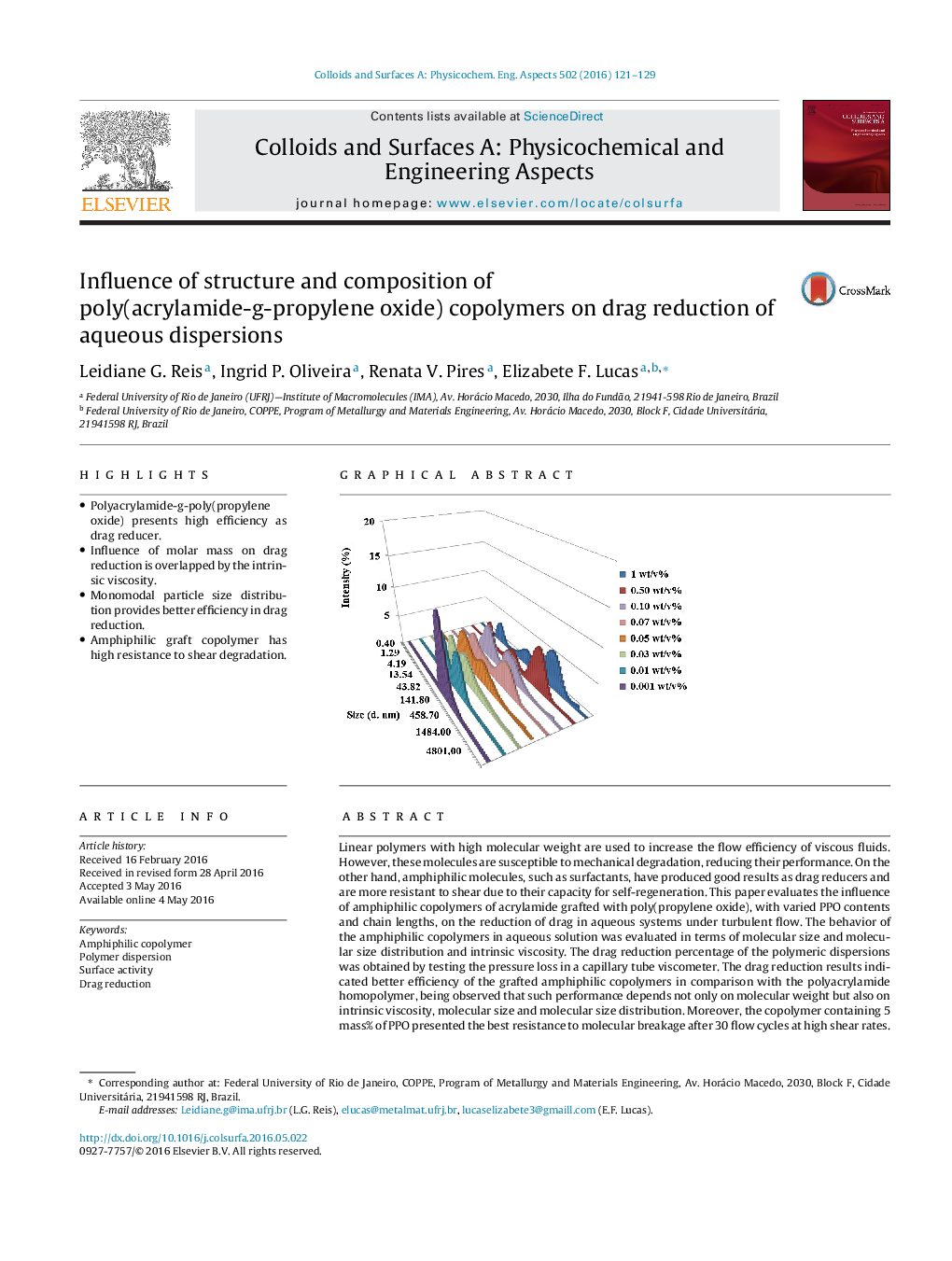| کد مقاله | کد نشریه | سال انتشار | مقاله انگلیسی | نسخه تمام متن |
|---|---|---|---|---|
| 591593 | 1453871 | 2016 | 9 صفحه PDF | دانلود رایگان |
• Polyacrylamide-g-poly(propylene oxide) presents high efficiency as drag reducer.
• Influence of molar mass on drag reduction is overlapped by the intrinsic viscosity.
• Monomodal particle size distribution provides better efficiency in drag reduction.
• Amphiphilic graft copolymer has high resistance to shear degradation.
Linear polymers with high molecular weight are used to increase the flow efficiency of viscous fluids. However, these molecules are susceptible to mechanical degradation, reducing their performance. On the other hand, amphiphilic molecules, such as surfactants, have produced good results as drag reducers and are more resistant to shear due to their capacity for self-regeneration. This paper evaluates the influence of amphiphilic copolymers of acrylamide grafted with poly(propylene oxide), with varied PPO contents and chain lengths, on the reduction of drag in aqueous systems under turbulent flow. The behavior of the amphiphilic copolymers in aqueous solution was evaluated in terms of molecular size and molecular size distribution and intrinsic viscosity. The drag reduction percentage of the polymeric dispersions was obtained by testing the pressure loss in a capillary tube viscometer. The drag reduction results indicated better efficiency of the grafted amphiphilic copolymers in comparison with the polyacrylamide homopolymer, being observed that such performance depends not only on molecular weight but also on intrinsic viscosity, molecular size and molecular size distribution. Moreover, the copolymer containing 5 mass% of PPO presented the best resistance to molecular breakage after 30 flow cycles at high shear rates. This behavior can be related to the lower molecular weights and the possibility of interaction between the pendant chains of PPO, causing greater shear resistance.
Figure optionsDownload as PowerPoint slide
Journal: Colloids and Surfaces A: Physicochemical and Engineering Aspects - Volume 502, 5 August 2016, Pages 121–129
